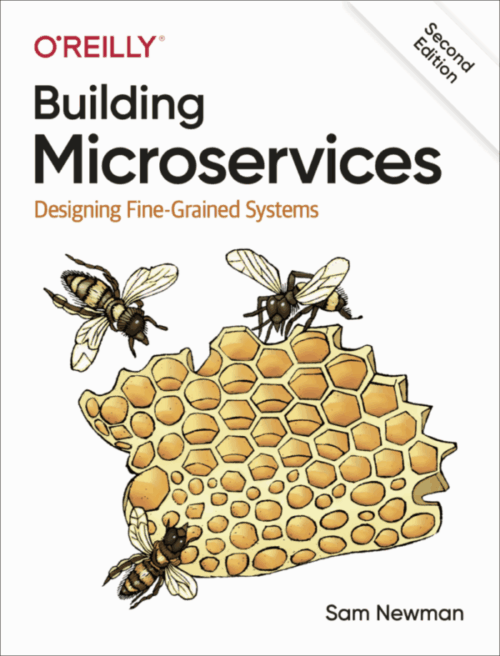In recent years, microservices have emerged as the go-to approach for building scalable, distributed systems. By decomposing large, monolithic applications into smaller, independent services, teams can move faster, scale more easily, and build systems that are more resilient. However, as the number of services increases, so does the challenge of managing communication between them.
This is where a Service Mesh steps in. It’s a dedicated layer of infrastructure designed to manage how services communicate with each other and making that communication more consistent, reliable, and secure. Every vendor says their solution for Service Mesh is the fastest, lightest, most secure, or easiest to use, rarely acknowledging the real-world trade-offs. What’s usually missing is: what problems do these solutions actually solve?
What is a Service Mesh?
A Service Mesh is a dedicated layer that helps manage how different services talk to each other in a distributed system. Instead of building all that communication logic into every single microservice, a Service Mesh takes care of it separately. It usually works by placing small proxy components, called sidecars, next to each service. These proxies has 2 main responsibilities:
- Handle the traffic between services
- Enforce rules set by a central control plane
These responsibilities keep things consistent across the eco-system and release developers to take care of complex network logic.
In software architecture, a Service Mesh is a dedicated infrastructure layer for facilitating service-to-service communications between services or microservices using a proxy. — wikipedia
A typical service mesh offers several key capabilities that become essential in large-scale microservice environments. In these complex systems, manually debugging, securing, and managing connections quickly becomes impractical. The main capabilities include:
- Secure communication using mTLS
- Traffic control like routing and retries
- Observability through tracing and metrics
- Resilience via timeouts and circuit breakers
Service Meshes are commonly used in Kubernetes environments, but it’s important to remember that Kubernetes doesn’t cover everything a service mesh is designed to handle. While Kubernetes does a great job with service discovery and some basic networking, it falls short when it comes to more advanced needs like traffic control, secure communication between services, and visibility into how those services interact.
Pros & Cons

One of the key benefits of a Service Mesh is consistent security through mutual TLS. It automatically encrypts all service-to-service communication, making it easier to implement zero-trust networking principles. This not only strengthens the overall security of your microservices architecture but also does so without requiring any changes to our application code.

One of the downsides of using a Service Mesh is the added operational complexity. Setting one up means introducing new components, like the control plane, sidecar proxies, and custom resource definitions (CRDs), which can make the infrastructure more complex to deploy and manage.

With built-in metrics, distributed tracing, and fine-grained traffic routing, a Service Mesh gives platform teams powerful tools for deep observability and precise traffic control, making it easier to understand system behavior, detect anomalies, and roll out changes safely.

Another downside of using a Service Mesh is the performance overhead. Since every request has to pass through a sidecar proxy, it can add some latency and use up extra CPU and memory resources.
In the upcoming sections, we’ll cut through the complexity and offer a clear, practical comparison of the three leading Service Mesh technologies: Istio, Linkerd, and HashiCorp Consul. Each comes with its own strengths, trade-offs, and ideal scenarios.

Istio – The Feature-Rich Powerhouse
Istio is one of the most well-known and widely adopted service meshes out there. It was born from a collaboration between Google, IBM, and Lyft, and quickly became a pioneer in showing just how powerful and flexible a service mesh can be for managing microservices. At its core, Istio is built on Envoy, a high-performance proxy, and it offers a rich set of features that are both deep and highly customizable, everything from traffic shifting and fault injection to policy enforcement and detailed telemetry.
One of Istio’s biggest strengths is its rich and comprehensive feature set. From a traffic management perspective, it offers advanced capabilities like canary deployments, traffic mirroring, and automatic retries. On the observability front, it integrates seamlessly with tools like Prometheus, Grafana, and Jaeger, making it easy to monitor and troubleshoot services.
Istio also stands out with its strong security features, including automatic mTLS and fine-grained RBAC, all backed by a powerful and flexible control plane.
But complexity has always been Istio’s biggest drawback. For teams new to service meshes, installing and managing Istio can feel overwhelming. Earlier versions only made this harder, but recent updates are working to ease the burden by eliminating the need for sidecars in some situations.

Linkerd – The Lightweight Specialist
Linkerd is the original Service Mesh, the first project to actually use the term. It’s a graduated project in the CNCF and was completely rebuilt for version 2.x with a focus on simplicity, speed, and ease of use. While Istio aims for deep feature sets and maximum flexibility, Linkerd takes a different approach: it’s lightweight, secure by default, and designed to be easy to run, even for small teams.
Linkerd stands out for its simplicity and performance. Thanks to its Rust-based data plane (powered by linkerd2-proxy), it offers low-latency, resource-efficient performance. Right out of the box, it gives you transparent mTLS, key golden metrics, a clear view of your service topology, and basic traffic control—without the hassle of a steep learning curve.
Of course, simplicity comes with trade-offs. Linkerd deliberately leaves out some of the more complex features you’ll find in Istio, things like advanced policy frameworks and plug-in systems. It’s also not quite as flexible when it comes to handling VM workloads, although support for multi-cluster setups and edge cases has been growing.
That said, Linkerd really stands out in Kubernetes-native environments, especially when reliability, security, and simplicity are key. It’s an excellent choice for teams looking to get the core benefits of a service mesh without all the extra complexity.

Consul – The Infrastructure-Agnostic Tool
HashiCorp Consul didn’t start out as a Service Mesh. It was originally built as a tool for service discovery and a key-value store to support dynamic infrastructure. But over time, it grew into a full-fledged Service Mesh, bringing together service discovery, mesh features, and the flexibility to run across different platforms. What sets Consul apart from tools like Istio and Linkerd is that it wasn’t built just for Kubernetes.
One of Consul’s biggest strengths is how well it works with the rest of HashiCorp’s tools, like Nomad, Vault, and Terraform. It offers:
- Reliable service discovery
- Built-in health checks
- Handy key-value store
Furthermore, it offer modern service mesh features like mTLS, access control based on intentions, and traffic splitting. If you’re running a complex hybrid or multi-cloud environment, Consul tends to fit right in.
That said, Consul isn’t without its challenges. Using it as a service mesh means you’ll need to deploy sidecar proxies (typically Envoy), set up the control plane, and manage Consul agents and servers. Essentially, Consul is a great fit for infrastructure teams that need a service mesh extending beyond Kubernetes, especially if they’re already using other tools in the HashiCorp ecosystem.
Wrapping Up
Choosing a Service Mesh isn’t just a technical choice; it’s a strategic one. While all three meshes we’ve looked at provide essential features like secure communication, observability, and traffic management, they each take a different approach and come with their own trade-offs.
- Istio offers incredible power and flexibility, but that often comes with added complexity.
- Linkerd takes a refreshing approach by prioritizing simplicity and performance, though it doesn’t offer as much room for customization.
- Consul shines with its platform-agnostic design and strong infrastructure integrations, but it can feel less intuitive in environments that are heavily centered around Kubernetes.
At the end of the day, there’s NO one-size-fits-all solution.
- Teams working in complex enterprise environments with heavy customization needs might find Istio worth the extra overhead.
- Meanwhile, lean, Kubernetes-native teams will probably appreciate how Linkerd “just works” out of the box.
- For organizations with a strong infrastructure focus—especially those running across both VMs and multiple clouds, Consul’s broader vision could be the better fit.





